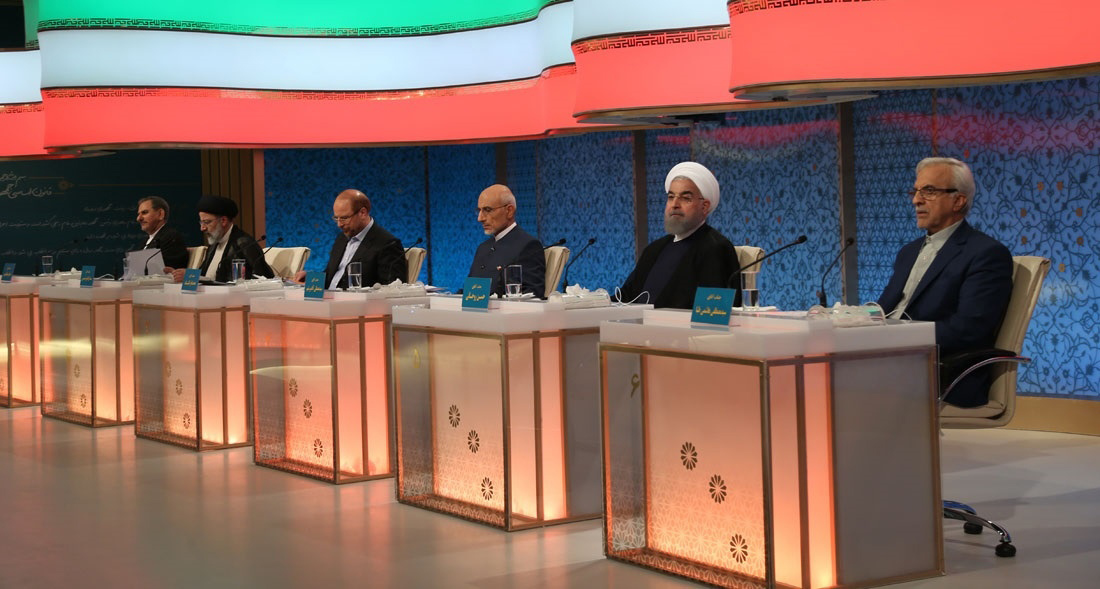Iran’s presidential election campaign is in full swing and what was perceived as an easy victory for the incumbent President Hassan Rouhani seeking reelection only a few weeks ago is now appearing more challenging.
The reason: a resurgent wave of populism among Rouhani’s conservative rivals. From a pledge to double or triple monthly cash transfers (currently at $12) and offers of generous unemployment benefits to the creation of one million jobs annually, the anti-Rouhani faction has made it a point to remove him out of office at any cost–even if that means taking recourse to crude populism similar to what was espoused by former president, Mahmoud Ahmadinejad.
While attacks on Rouhani would not have come as a surprise–his policies had come under fire by hardliners ever since he took office–the unrealistic campaign promises pitched by some candidates should raise the alarm. Attractive slogans, which ignore the facts and economic realities of Iran, are promising voters a Shangri-la of sorts.
The smear campaign is capitalizing on the fact that Iran’s economy, after years of mismanagement and debilitating sanctions, has not “fully” recovered and their tangible effects have not been felt by ordinary Iranians. This, they argue, is also a reason that the nuclear accord has been a fiasco and the current government failed to negotiate a better deal.
In an about-face from their pre-election views, however, conservative candidates vow to honor the 2015 agreement with world powers.
Rouhani’s economic team has been quite successful in curbing a galloping inflation–nearly 40% when he took office in 2013–and bringing it to single digits. He has also made noteworthy achievements in restoring sanity to the process of policymaking and observing fiscal and monetary discipline–a sheer anomaly in the face of the precedent set by the previous administration.
Iran’s economy had a negative growth of nearly 6% in the fiscal 2012-13,the biggest contraction in recorded history.
According to Saeed Leylaz, a prominent reform-minded economist, the country would need a steady growth of 8% for six consecutive years for the purchasing power to return to its 2011 level.
“If that growth maintains its pace until 2027, then the country can reclaim the purchasing power enjoyed in 2006 just before Ahmadinejad took office,” he said.
This is while global institutions like the International Monetary Fund and the World Bank have at best projected a growth of 4% for Iran in the coming years. So the claims of some candidates to create one million jobs a year (a 1% growth can create 100,000 jobs) could at best be wishful thinking.
The only other alternative would be increasing productively, which could not be conceived of in the short run. One candidate, who is ironically an engineering professor at a top technical university, has protested why the country is not manufacturing it own airplane parts when ordering aircraft from Boeing and Airbus.
Twist in Plot
Perceiving the scale of the threat for the hard-won economic stability of recent years, the mainstream media and institutions have hit back.
Donya-e-Eqtesad, a leading local economic newspaper, which has usually steered clear of partisan politics, is featuring numerous editorials refuting the claims of these candidates.
In a rather unusual move, the Central Bank of Iran this week issued a statement on its website, rejecting the controversial claims of Mohammad Baqer Qalibaf, the powerful mayor of Tehran, that the better share of the banking system’s credits goes to an elite 4% of the population.
Qalibaf, whose municipality also runs a bank and has been mired in controversies of its own, is attempting to gain attention by often repeating that the current administration is only favoring 4% of the society and neglecting the other 96%.
CBI Governor Valiollah Seif held a press conference on Tuesday to tell reporters that the Iranian economy can no longer “tolerate” a repeat of past mistakes.
Qalibaf has also spoken in derogatory terms about importers who are destroying domestic industries and killing jobs. This prompted Iran Chamber of Commerce to condemn his comments, noting that 80% of imports are raw materials and intermediary goods and therefore different from “tchotchkes”.
In a more hopeful sign, Rouhani and his Vice President Es’haq Jahangiri–who is also a candidate but acting like a running mate–have reversed their early passive attitude in the face of the attacks and gone on the offensive.
However late that may be, this could shift the momentum in their favor, which is especially important in light of recent polls that put Rouhani at a disadvantage in provinces.
From economic stability to political soundness, there is so much at stake in the May 19 presidential vote: A step backward–as advocated by Qalibaf and his alter ego Ebrahim Raisei (a candidate whose entourage include Ahmadinejad’s ministers)–could come at a colossal cost for the country.



